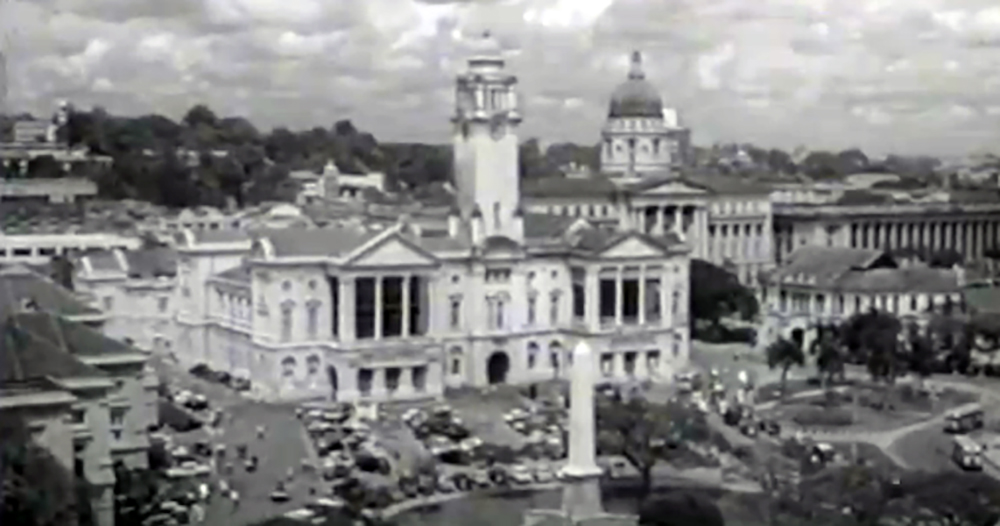In the last 50 to 60 years, Singapore has developed at a blistering pace to the point that what our little island is today is almost unrecognisable from its past.
We came across a fascinating short film that gives us an intriguing look into how our economy functioned and what its main drivers were, though — entitled "Mangrove to Metropolis", this mid-1960s work by Cathay Film Services provides a glimpse into what made the Singapore metropolis of the 1960s (yes, it wasn't a fishing village then) tick.
The 1960s was an eventful period for Singapore. It transitioned from full internal self-government (1959 to 1963) to being part of the Federation of Malaysia (1963 to 1965), and subsequently became independent in 1965. Singapore's rapid development and transformation into what it is today began from that period.
The 10-minute documentary, a likely government-commissioned piece, gives an overview of Singapore's economy in the 1960s.
An educated guess on the film's actual period of production would be 1965 to 1967, due to the film's reference to the late Goh Keng Swee as former finance minister and the use of the term "Malaysia". Goh had taken up the defence portfolio between 1965 and 1967 to build up independent Singapore's security and defence, after being finance minister from 1959 to 1965. He would eventually take up the finance portfolio again in 1967.
Here are some things we noticed about life here from the clip:
Farming was a viable trade
Unlike in the present day, where the only farms left are in Kranji, farming was an essential part of our economy. As the video's narrator notes:
Rice, our basic food, has to be imported. And as we are predominantly a trading people with a growing industrial capacity, our farmers and fishermen are an essential element in our economy. Fish are grown in inland fresh water ponds. Prawns grow in specially-prepared beds.
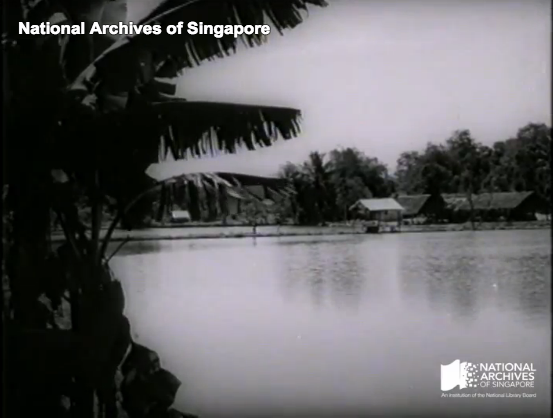 Screen grab from video
Screen grab from video
Fish and prawns were not the only kinds of farming done, of course. There were vegetable farmers too:
Our farmers, patiently tending their small plots, make the comparatively infertile clays of Singapore into constantly fertile vegetable gardens, supplying fresh greens the whole year round.
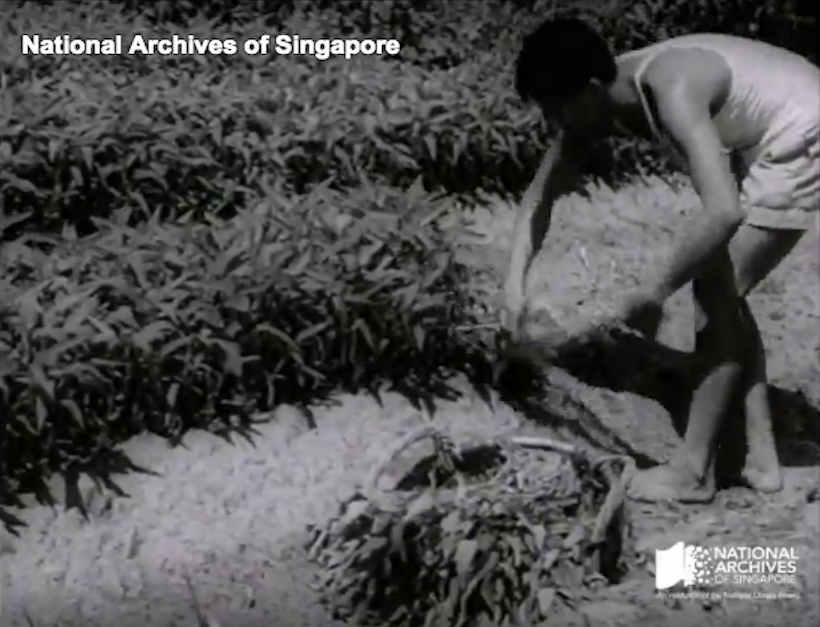 Screen grab from video
Screen grab from video
Also, there were more live chickens in Singapore in the 1960s than people.
The poultry farmer has used the most modern methods to increase our poultry population, now 20 times greater than our human population, making us an exporter of eggs.
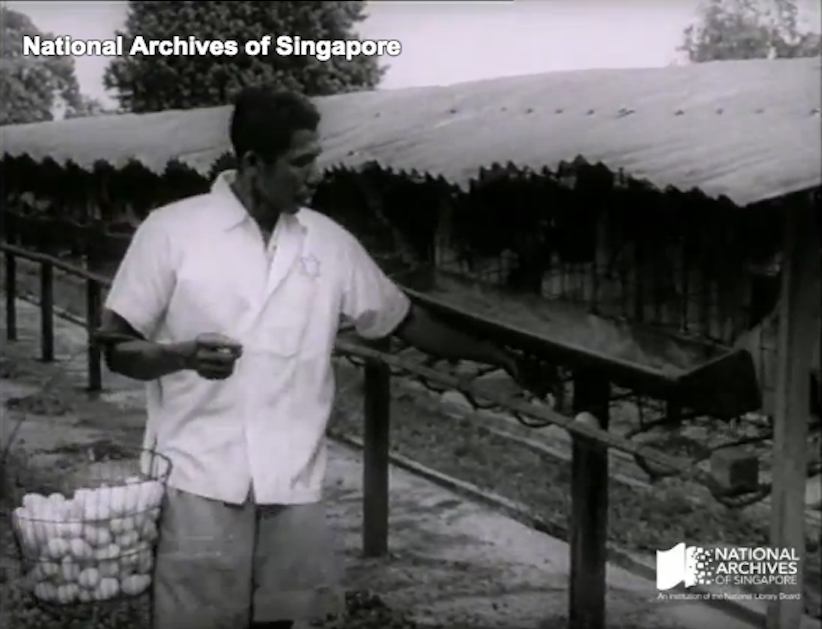 Screen grab from video
Screen grab from video
We had pig farms too:
And the pig — the favourite food of the Chinese — not only meets our own demands, but adds to our wealth via exports.
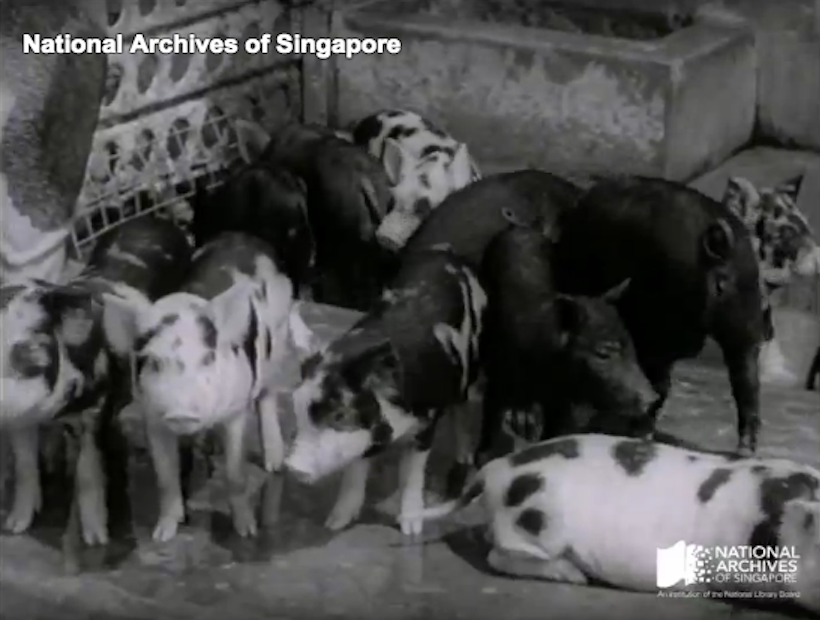 Screen grab from video
Screen grab from video
Singapore was the fourth-largest port in the world in the 1960s
The video described the importance of trade to Singapore, noting its rank as the fourth largest-port in the world (In case you're wondering, we rose to become the world's busiest container port for many years, until Shanghai's port overtook us in 2010, so we're now at number two.)
The core of our trade is the port area. The earliest area was the Singapore River, where the tongkangs still ply and the godowns still receive their cargoes. Later, the sailing ships would align in the lee of the inshore islands. And last stage of all, the berths where the largest ships were built in what is known as Keppel Harbour. Well-sheltered with deep water maintained at all times by the sea's own currents and adjacent to the city area. Here, the fourth largest port in the world is developed. Scenically beautiful, mechanically efficient, and large enough to take alongside and work 26 ocean-going liners.
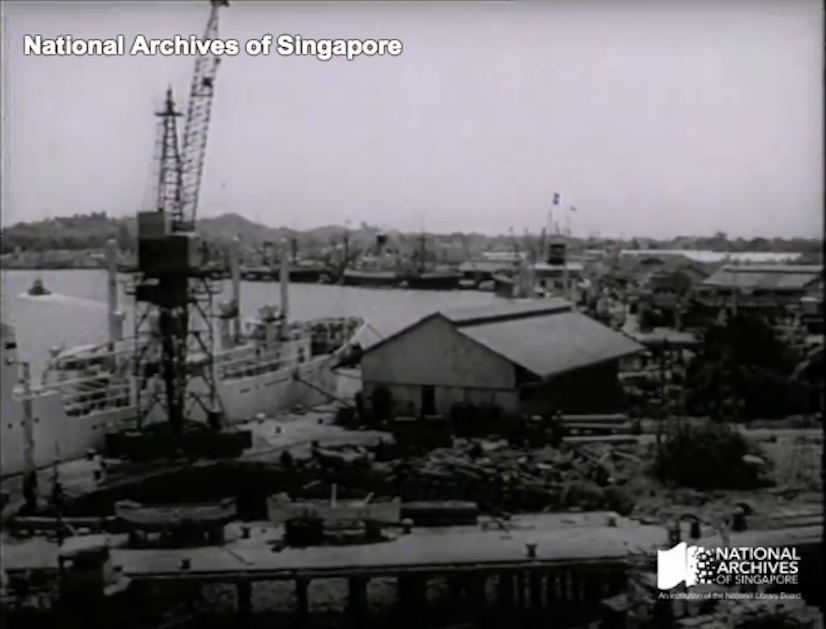 Keppel Harbour. Screen grab from video.
Keppel Harbour. Screen grab from video.
Paya Lebar Airport was Singapore's newest civilian international airport
These were the days before Changi Airport was even built:
And for those who seek trade by air, the new airport monthly receives 160 flights of 10 international airlines landing at the safe and modern airport of Paya Lebar.
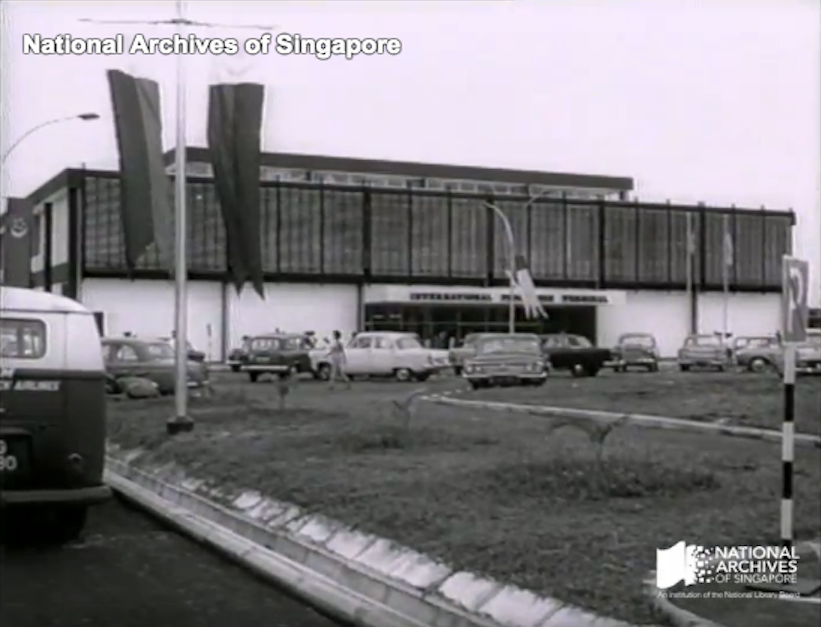 Paya Lebar airport. Screen grab from video.
Paya Lebar airport. Screen grab from video.
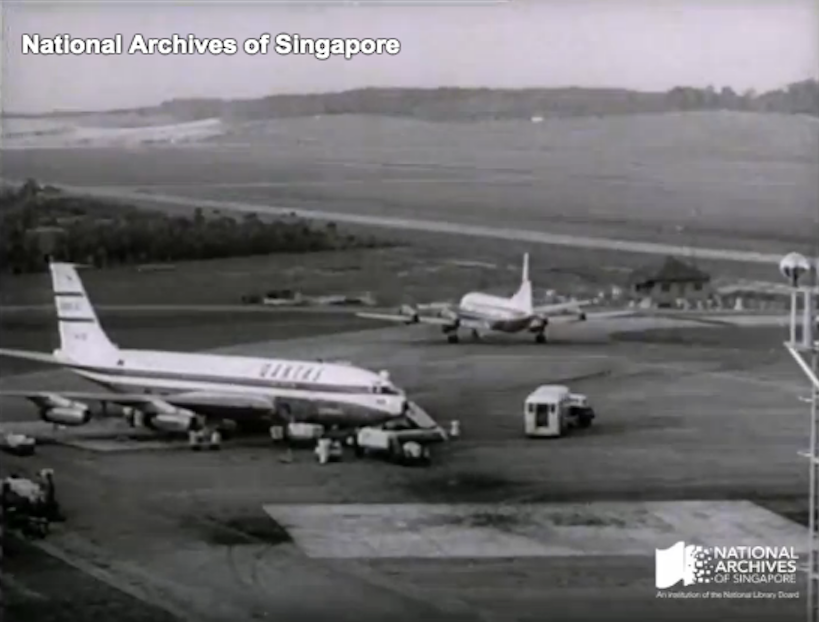 Paya Lebar airport. Screen grab from video.
Paya Lebar airport. Screen grab from video.
For a small island, Jurong Industrial Estate was the largest of its kind in Southeast Asia back then.
Jurong Industrial Estate was the brainchild of Goh Keng Swee, and even today remains one of the largest industrial areas in the region:
When the PAP government came to power in 1959, they embarked on a deliberate planned major expansion of industry, which has now taken firm root on the Jurong Industrial Estate, the largest in Southeast Asia.
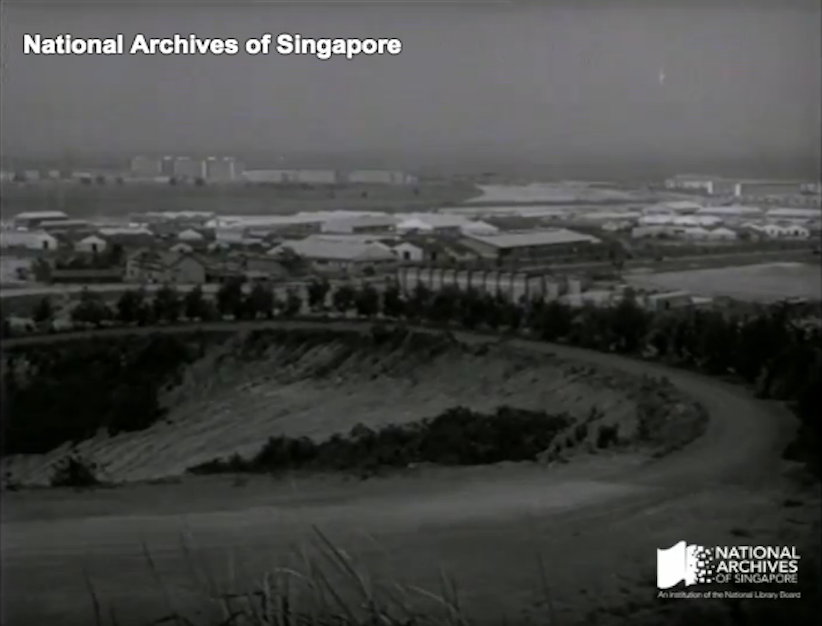 Jurong Industrial Estate. Screen grab from video
Jurong Industrial Estate. Screen grab from video
Too bad we're upsetting the human to chicken ratio significantly more these days.
Check out the full film online here.
Top image screen grab from the video.
If you like what you read, follow us on Facebook, Instagram, Twitter and Telegram to get the latest updates.
